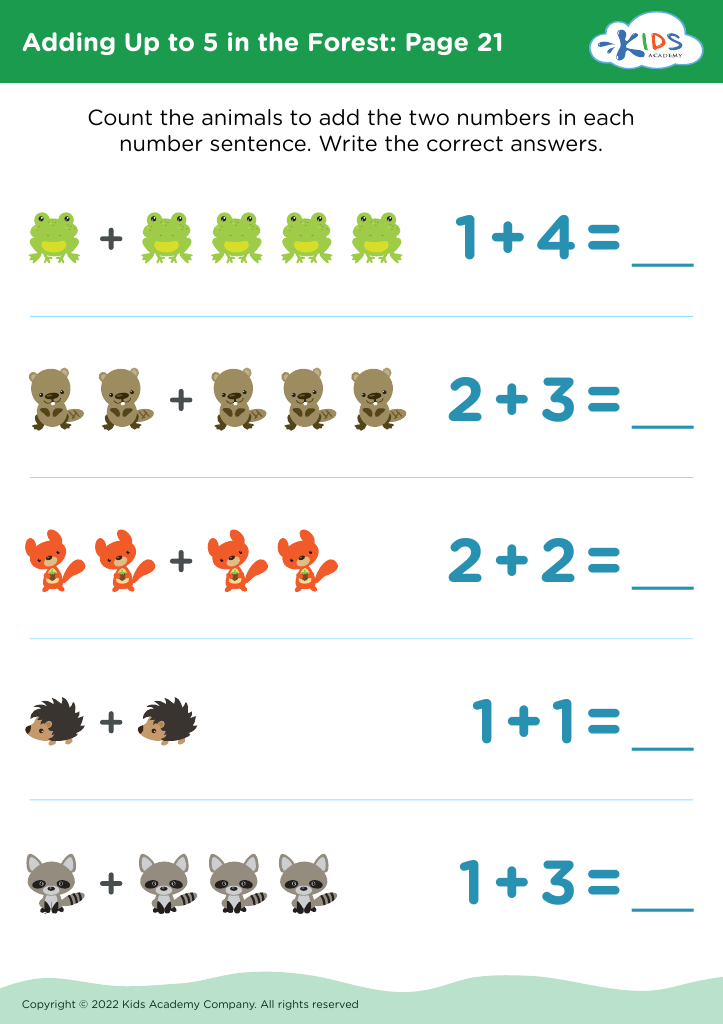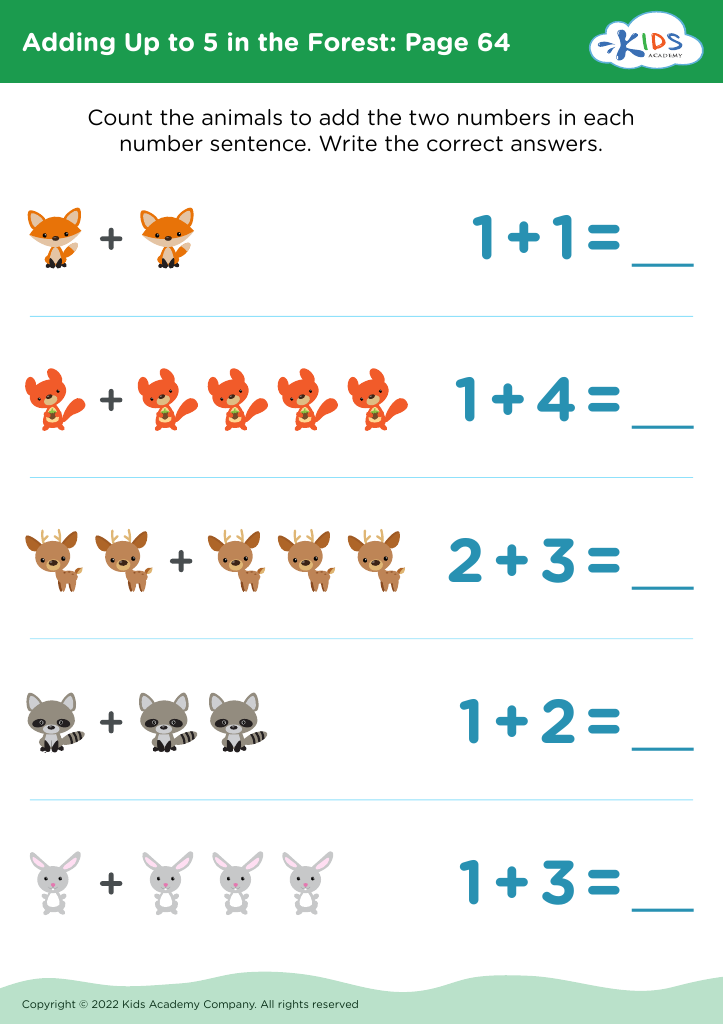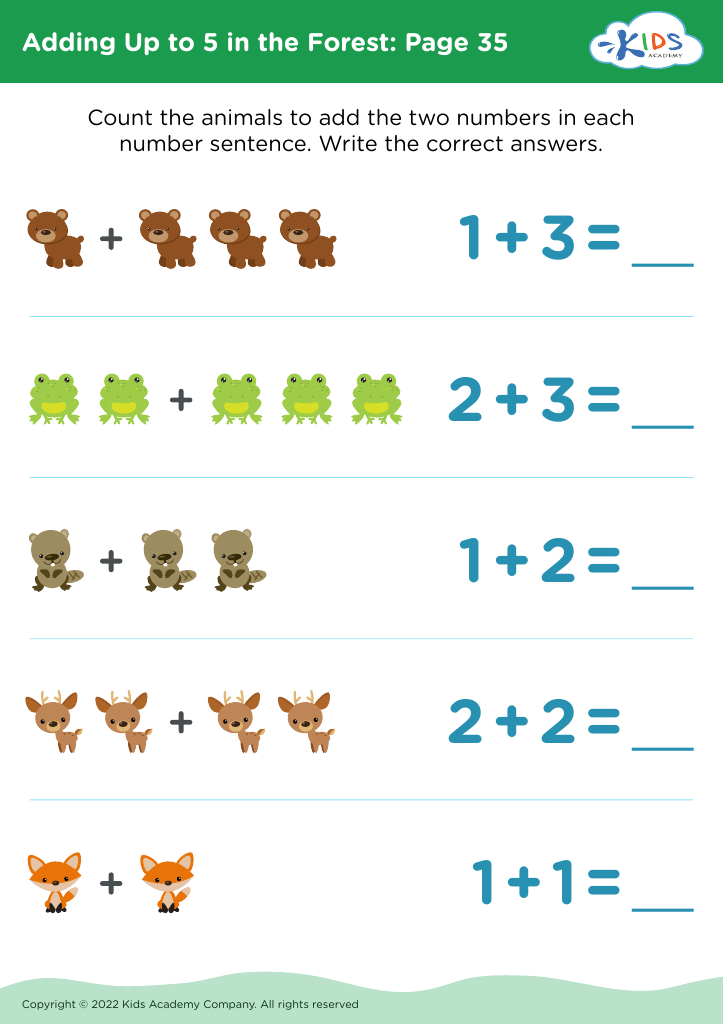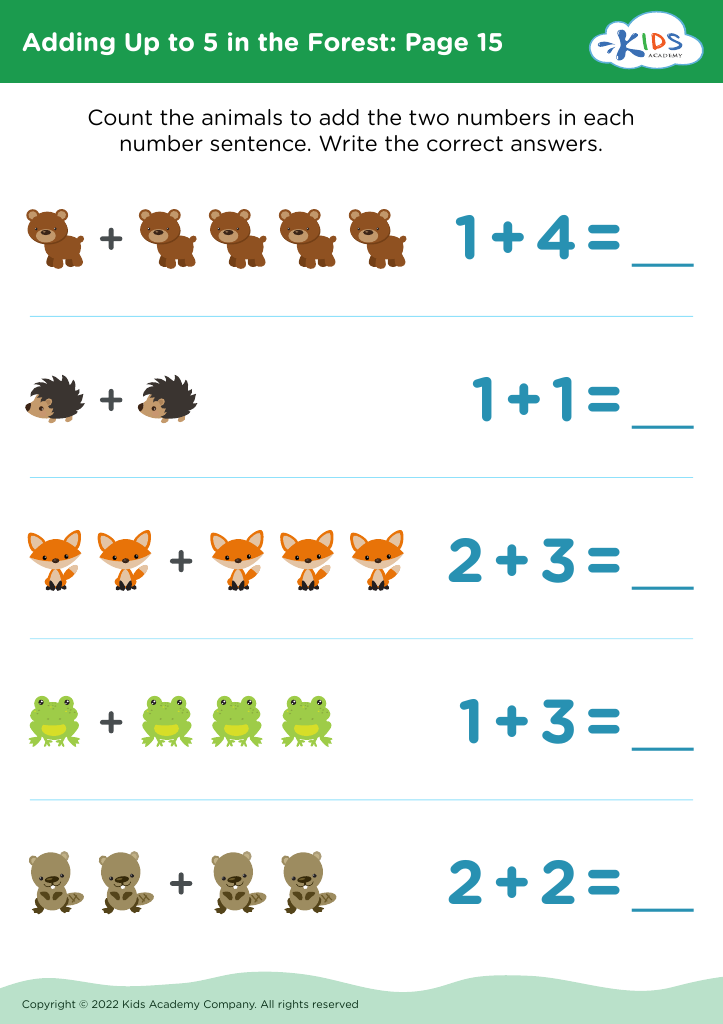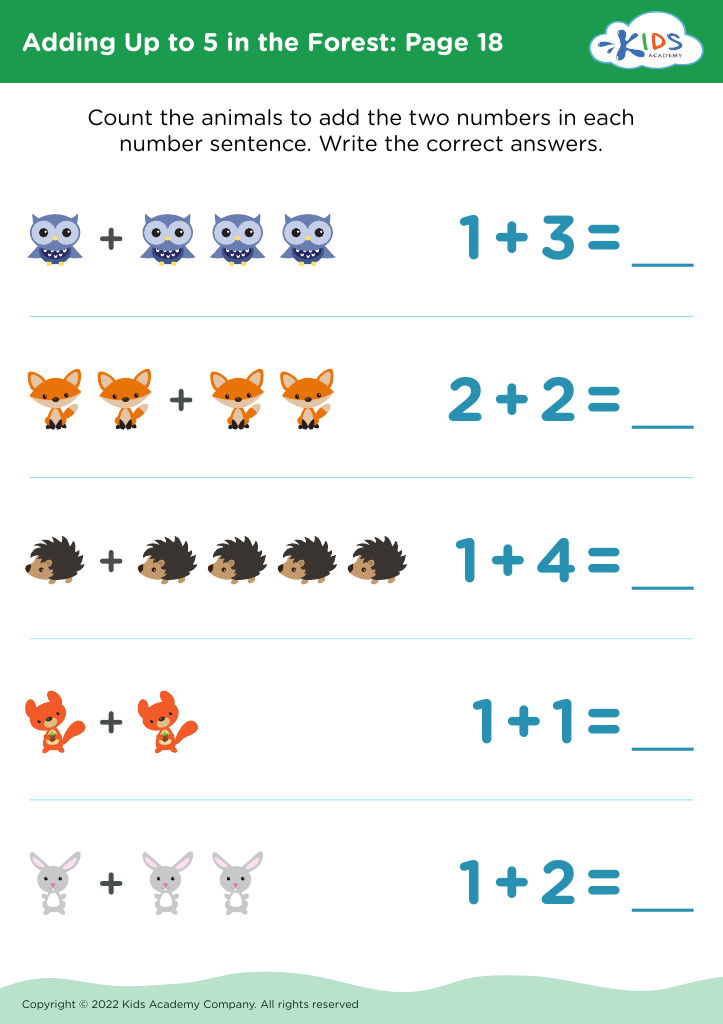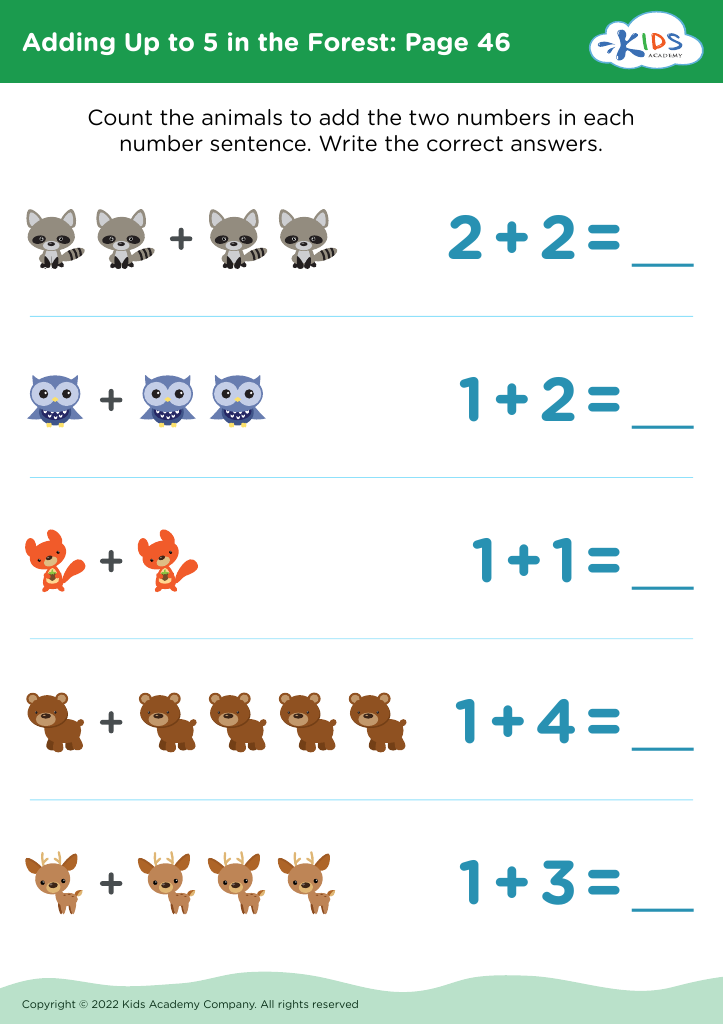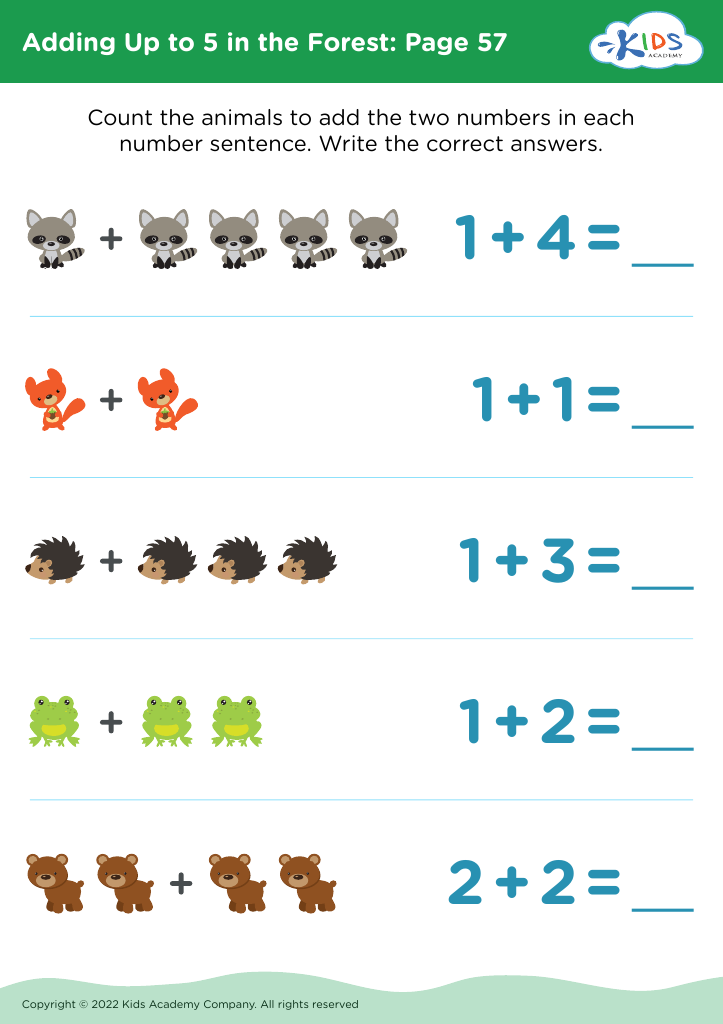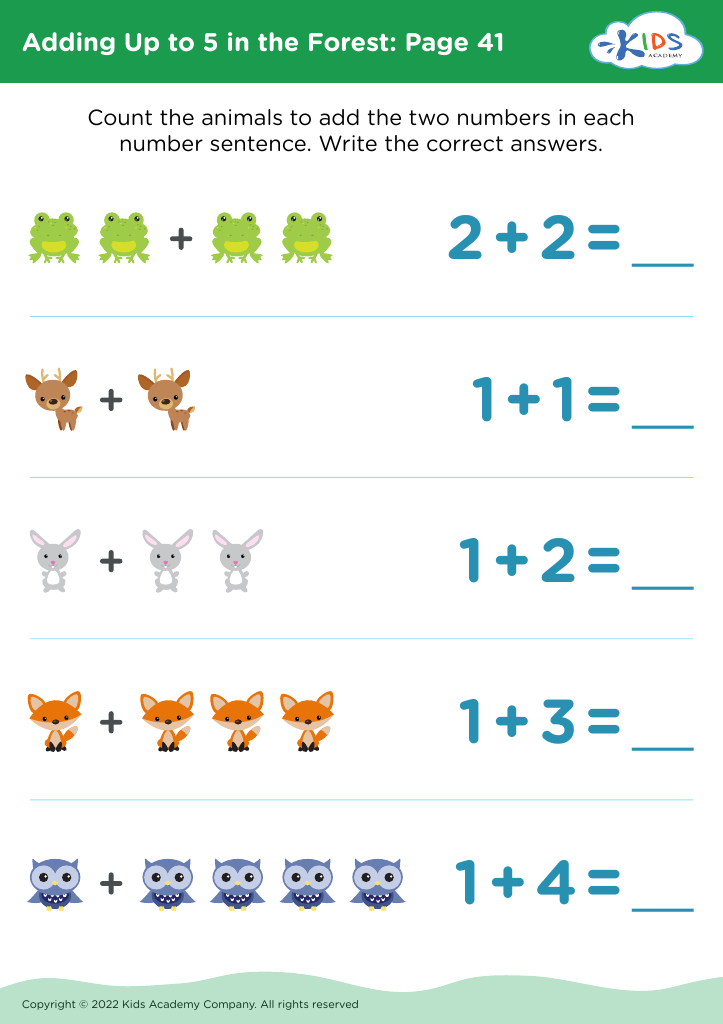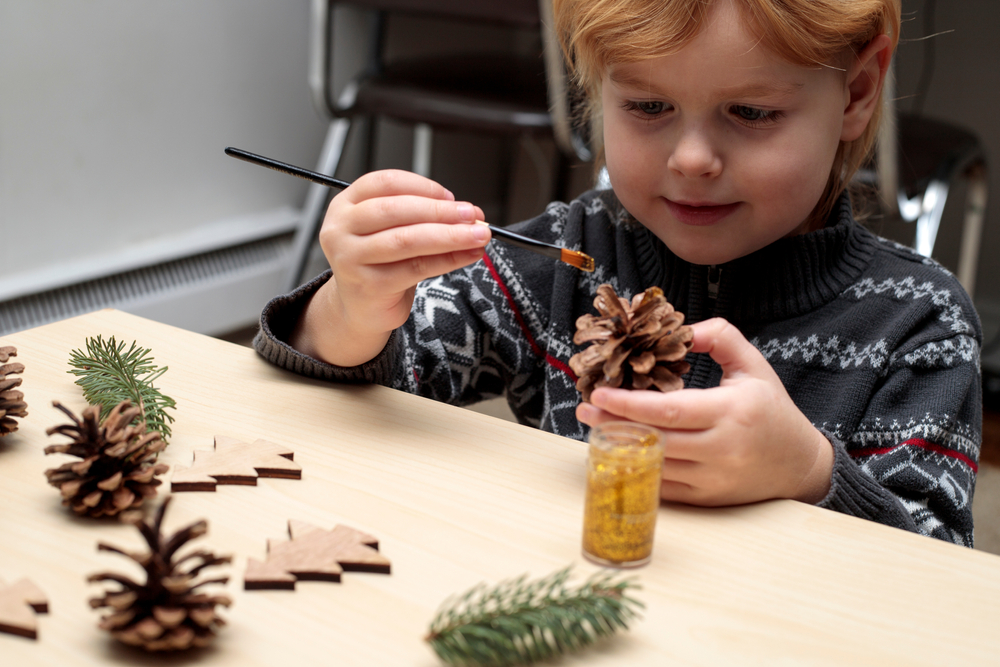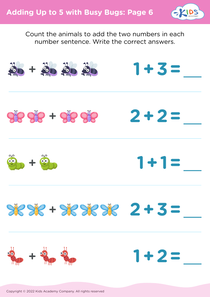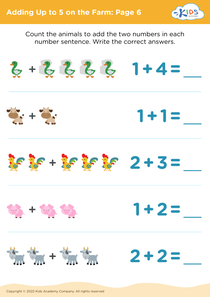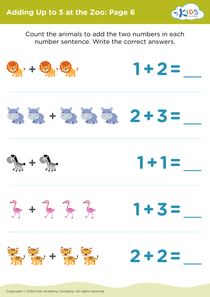Visual Learning Adding in the Forest Worksheets for Ages 4-6
12 filtered results
-
From - To
Discover the exciting world of "Visual Learning Adding in the Forest Worksheets" designed for ages 4-6! These engaging worksheets enhance young learners’ math skills through vibrant forest-themed illustrations, making addition fun and interactive. Each activity encourages children to visually explore addition concepts, fostering a deeper understanding of numbers in a playful context. Ideal for home or classroom use, our worksheets promote critical thinking and problem-solving skills while keeping children entertained. With a focus on visual learning, your little ones will gain confidence in their math abilities and develop a love for learning. Start their educational adventure today!
Visual learning plays a crucial role in the development of young children, particularly for ages 4-6, where foundational skills are established. Integrating visual learning with experiences in the forest offers multifaceted benefits for young learners. Children in this age group are typically highly visual, meaning they learn best through pictures, diagrams, and immersive environments.
When parents and teachers incorporate forest experiences, they promote a hands-on approach to learning. Nature provides rich visuals — colors, shapes, and natural patterns — that can inspire curiosity and engagement. The forest setting encourages exploration and observation, helping children develop critical thinking and problem-solving skills. These experiences also enhance their ability to recognize and interpret visual information, supporting literacy, math, and science skills.
Moreover, visual learning in the forest highlights connections to real-life contexts. Children can relate abstract concepts to tangible experiences, which deeply embeds knowledge. Nature's beauty promotes emotional and sensory development, fostering a love for learning. Additionally, this environment can boost social skills as children work together, fostering teamwork and communication.
By prioritizing visual learning in settings like the forest, parents and teachers can create an enriching learning atmosphere, crucial for holistic development at this pivotal stage.




